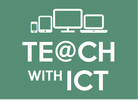The magic of ... Maths
Mathematics and magic may seem a strange combination, but many of the most powerful magical effects performed today have a mathematical basis. Famous magicians such as Derren Brown and David Blaine use mathematics-based tricks, in fact, mathematics is the secret behind the technologies we use today. A trick which demonstrates perfectly the relationship between maths and magic is the ‘Think of a number’ trick.
The trick
If my powers of deduction are correct, your answer should be 10!
So, how does the trick work? Before explaining how the trick works, let’s simplify it:
If my powers of deduction are correct, your answer should be 10!
Clearly no matter what you start with, the answer should always be the same. We can see why this trick works by using a little bit of algebra! If you follow the instructions starting with the variable ‘X’ instead of an actual number in Step 1, you will see that ‘X’ is eliminated by Step 3.
Or in algebraic terms: x + 10 - x = 10
We can do the same for first example:
Your answer is 10: x + 10 - x = 10
Using this formula, students can make up their own mathematical mind reading tricks!
Below is another variation of the same trick. In this video, Jane Kang, co-author of the ‘Transition to Algebra curriculum’, models the ever-engaging ‘Think of a number’ trick used to launch the innovative algebra curriculum. She explains how in exploring number tricks, such as the one shown here, students encounter many of the big ideas of introductory algebra; learn to express specific numbers with generic notations; experience the natural logic of the distributive property; and begin to shift their thinking from concrete procedures to the abstract reasoning success with algebra requires.
The trick
- Think of a number
- Now double it
- Add 20
- Halve it
- Now take away the first number you thought of
If my powers of deduction are correct, your answer should be 10!
So, how does the trick work? Before explaining how the trick works, let’s simplify it:
- Think of a number
- Now add 10
- Take away the first number you thought of
If my powers of deduction are correct, your answer should be 10!
Clearly no matter what you start with, the answer should always be the same. We can see why this trick works by using a little bit of algebra! If you follow the instructions starting with the variable ‘X’ instead of an actual number in Step 1, you will see that ‘X’ is eliminated by Step 3.
Or in algebraic terms: x + 10 - x = 10
We can do the same for first example:
- Think of a number: x
- Now double it: 2x
- Add 20: 2x + 20
- Halve it: (2x + 20) / 2 = x + 10
- Now take away the first number you thought of: x + 10 - x
Your answer is 10: x + 10 - x = 10
Using this formula, students can make up their own mathematical mind reading tricks!
Below is another variation of the same trick. In this video, Jane Kang, co-author of the ‘Transition to Algebra curriculum’, models the ever-engaging ‘Think of a number’ trick used to launch the innovative algebra curriculum. She explains how in exploring number tricks, such as the one shown here, students encounter many of the big ideas of introductory algebra; learn to express specific numbers with generic notations; experience the natural logic of the distributive property; and begin to shift their thinking from concrete procedures to the abstract reasoning success with algebra requires.
How to get started
The good news is that you don’t have to be a professional magician to perform these tricks – nor do you need to join the magic circle! Thankfully, there are a number of websites that will show you how to perform these simple tricks as well as show you how to incorporate these tricks into your lesson plans.
Below is a collection of websites dedicated to the use of magic in the classroom:
The magic of…
The magic of series is a collection of resources, produced by Queen Mary University of London, which aims to support teachers in the use of magic in the classroom to engage and inspire learners. All the resources are linked to the national curriculum and cover principles found in subjects such as Mathematics and Computing. Each resource contains a selection of hand-picked magic tricks and includes step-by-step instructions as well as explanations of how the tricks work.
Websites:
- The magic of Computing: http://www.cs4fn.org/magic/
- The magic of Mathematics: http://www.qmul.ac.uk/mathsmagic/
Maths Made Magic
A handbook of mathematical based magical tricks intended for use in the classroom. These magic tricks have been mapped to the KS4 curriculum and cover a diverse range of mathematical concepts from probability to Pythagoras. The handbook also contains step-by-step instructions for performing each trick as well as details of the mathematical principle behind the trick.
Website: http://www.qmul.ac.uk/mathsmagic/
The manual of mathematical magic
As well as showing you how to perform a variety of mathematical magical tricks, the book explores the mathematics behind each trick and explains how that same mathematics is used in the real world. It also looks at the varied and exciting sorts of jobs that make use of the mathematics powering your magic. All the tricks are self-working, which means there is no need to know any clever sleight of hand, and cover a range of mathematical concepts from addition to algebra.
Website: http://mathematicalmagic.com/
Illusioneering
A book containing easy to do magic tricks based on scientific principles covering chemistry, physics, engineering and mathematics. Each trick includes step-by-step instructions as well as tips for performing the trick.
Website: http://illusioneering.org/

